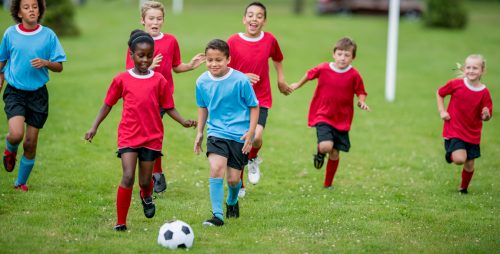 Physical literacy is the cornerstone of both participation and excellence in physical activity and sport. Individuals who are physically literate are more likely to be active for life.
Physical literacy is the cornerstone of both participation and excellence in physical activity and sport. Individuals who are physically literate are more likely to be active for life.
• Becoming physically literate is influenced by the individual’s age, maturation, and capacity.
• Ideally, supporting the development of physical literacy should be a major focus prior to the adolescent growth spurt.
• The skills that make up physical literacy vary by location and culture, and depend on how much importance a society places on certain activities.
Physically literate individuals:
• Demonstrate a wide variety of basic human movements, fundamental movement skills, and fundamental sports skills.
• Move with poise, confidence, competence, and creativity in different physical environments (on the ground, both indoor and outdoor; in the air; in and on water; on snow and ice).
• Develop the motivation and ability to understand, communicate, apply, and analyze different forms of movement.
• Make choices that engage them in physical activity, recreation or sport activities that enhance their physical and psychological wellness, and permit them to pursue sport excellence commensurate with their ability and motivation.
The basic movement skills can be developed through the following four activities. In combination, they provide a base for all other sports.
1. Athletics: run, jump, throw, and wheel.
2. Gymnastics: ABCs of athleticism (agility, balance, coordination, and speed). Including dance adds to rhythmic abilities.
3. Swimming: for water safety reasons; for balance in a buoyant environment; and as the foundation for all water-based sports.
4. Skating, slip, and slide movements: on ice, snow or water, the need to develop stability is required.
Without the basic movement skills, a child will have difficulty participating in any sport. For example, to enjoy baseball, basketball, cricket, football, netball, handball, rugby, and softball, the simple skill of catching must be mastered.
Fundamental movements skills and fundamental sports skills should be introduced through fun activities and short games. At the FUNdamentals stage, it is critical to provide many opportunities for children to explore their movement potential in a safe environment.
>> Learn about the next key factor: Specialization
To read the entire Long-Term Development in Sport and Physical Activity 3.0 resource paper, click here.
